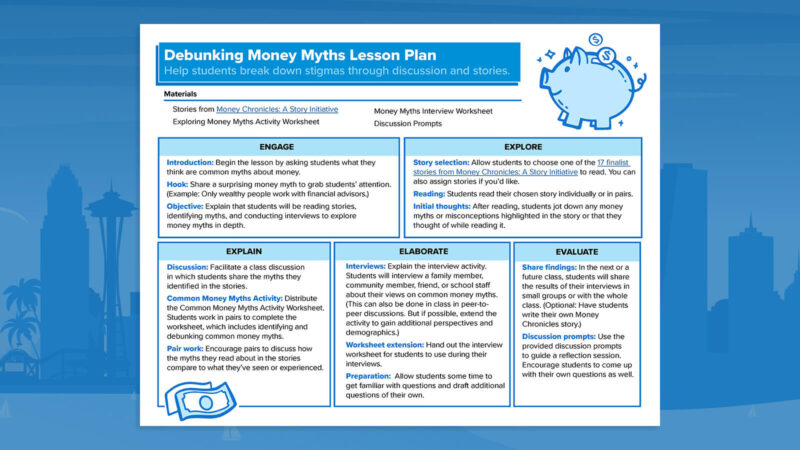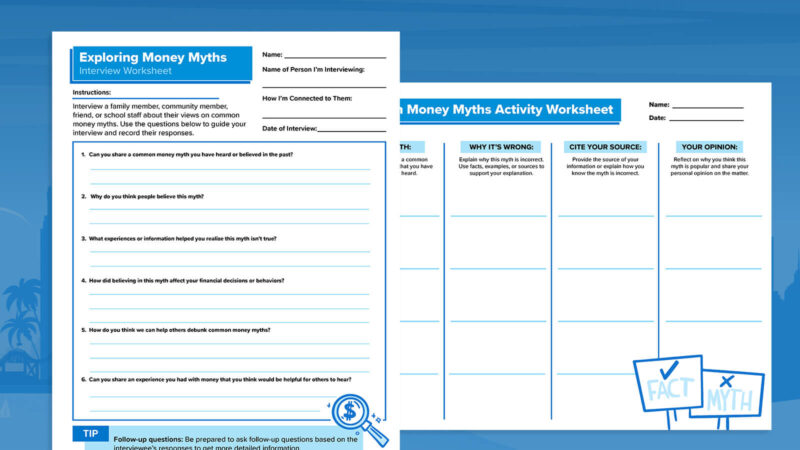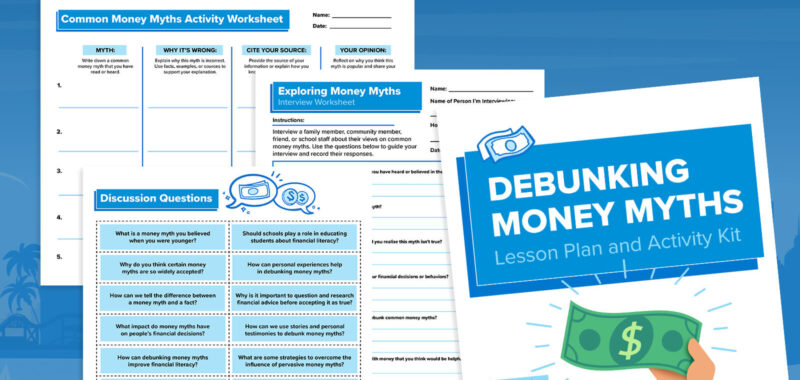Money can be a complicated topic. A lot of times, we avoid discussions around money and finances because it’s stressful, uncomfortable, and even confusing. In fact, recent research tells us nearly half of millennials and Gen Z feel they didn’t learn the financial facts needed to feel capable growing up, yet 70% were working a job before they turned 19.
Our young people need and deserve more. With so much general misinformation out there, it’s important for students to feel comfortable bringing up questions they may have about finances. They should feel comfortable tackling and debunking money myths like:
- Only wealthy people need financial advisors.
- You should avoid credit cards.
- Renting is just throwing money away.
- You shouldn’t talk to people about money.
This lesson plan bundle, Debunking Money Myths, will help get behind the truth of these and many other topics by encouraging students to have those challenging conversations. Sign up right now to get access to these free resources, and keep reading to learn more.
What’s Included in the Money Myths Lesson Plan

The lesson plan helps students understand and challenge common financial misconceptions. Here’s a quick look at what it includes.
- Introduce money myths: Start by discussing money myths students have heard.
- Read money stories: Students read stories from Money Chronicles: A Story Initiative to identify and discuss money myths.
- Deepen the discussion: Students will have conversations in partner and group work to further debunk myths.
About the Money Myths Activity and Worksheet

All lessons are better when there are hands-on components. Take a look at the activity and worksheet included within the lesson plan.
- Identify additional money myths: This activity will help guide students in identifying and debunking money myths. It will empower them to have a voice and will encourage critical thinking.
- Use the interview worksheet: Students interview family or community members about myths, gaining diverse perspectives.
These tools promote interactive learning, critical thinking, and real-world application, helping students build a strong foundation in financial literacy and feel comfortable having conversations about money.

